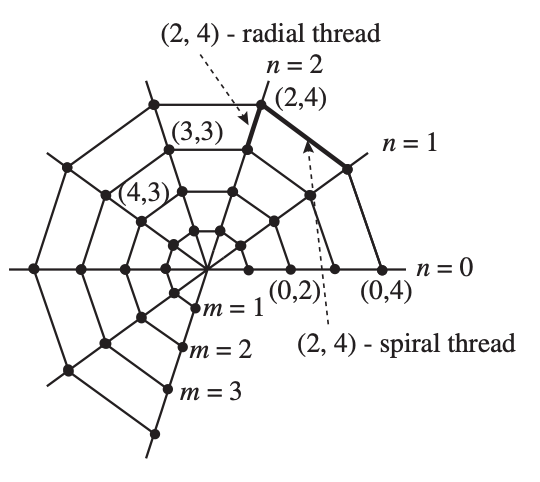In response to the second question (which I interpret as asking for math models of spider webs as they appear in Nature): There exist several distinct types of spider webs, one. The most common type that has been extensively studied is, the orb web of araneids, seehas been modeled in Simple Model for the Mechanics of Spider Webs (2010).
A key property of the orb web model is that the web is free of stress concentrations even when a few spiral threads are broken. This is distinctly different from usual elastic materials in which a crack causes stress concentrations and weakens the material.
The model highlights the mechanical adaptability of the web: spiders can increase the number of spiral threads to make a dense web (to catch small insects) or they can adjust the number of radial threads (to adapt to environmental conditions or reduce the cost of making the web) – in both cases without reducing the damage tolerance of the web.


Left panel: Construction of the orb web described in the cited paper.
Right panel: Naturally occurring orb web (Wikipedia).
